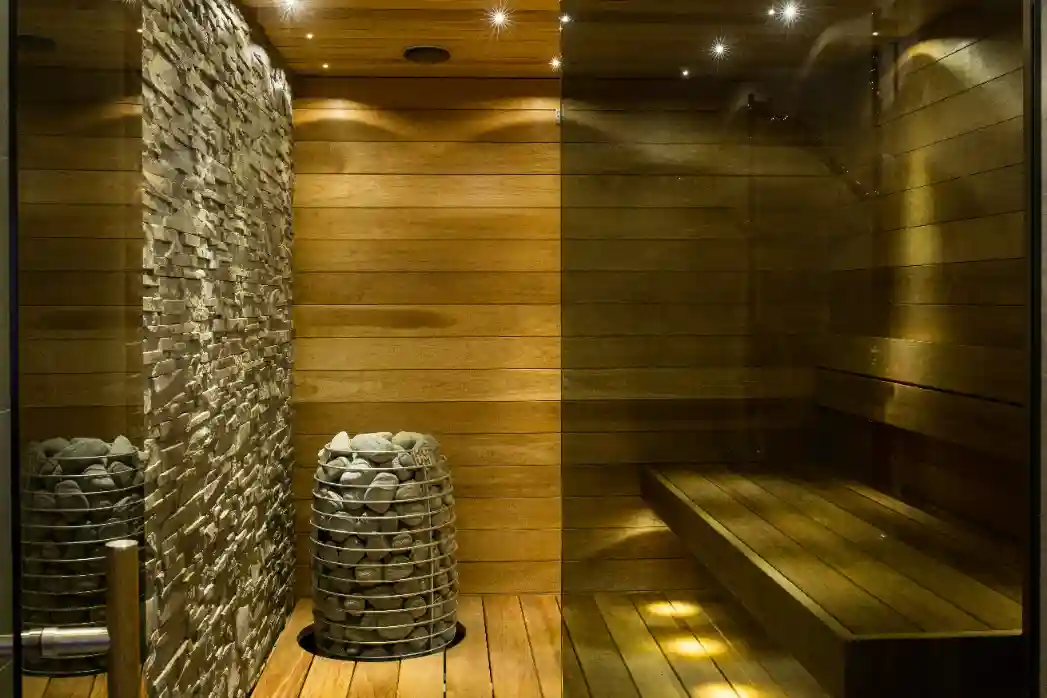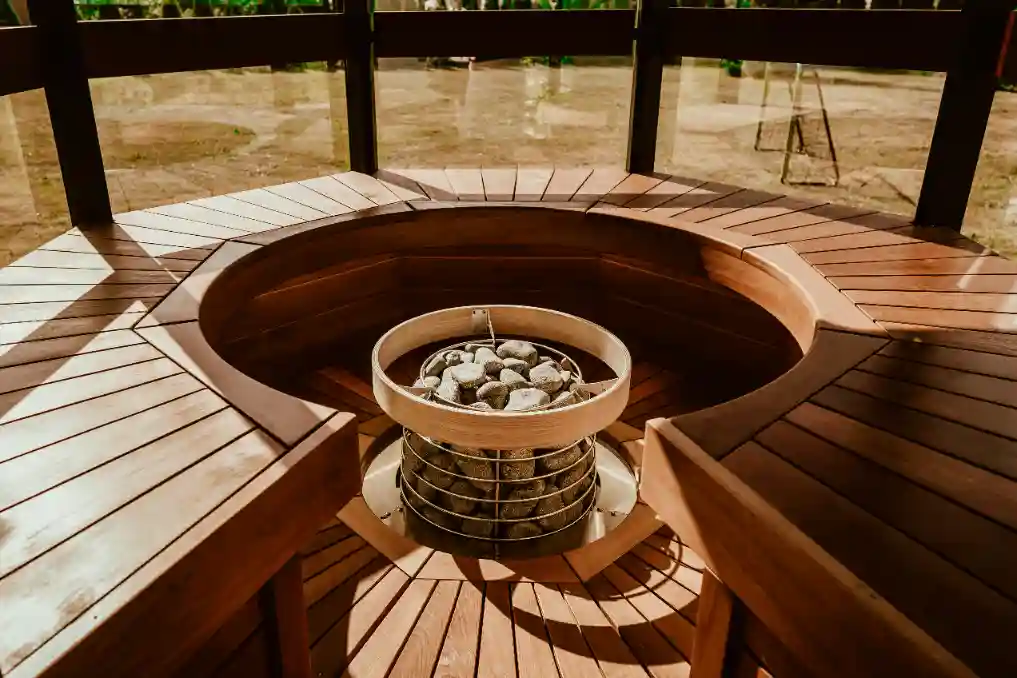Choosing the right sauna heater is one of the most critical decisions in your sauna project. The heater literally powers your sauna experience, affecting everything from heat-up time to energy costs to overall comfort. After years of researching heaters and helping homeowners make informed choices, I can tell you that spending time on this decision pays dividends for decades.
Let's dive deep into sauna heater selection, covering types, sizing, power requirements, special considerations like low EMF options, and installation requirements. By the end, you'll know exactly what heater suits your needs.
Understanding Sauna Heater Types
Modern indoor saunas primarily use electric heaters, though wood-burning and infrared options exist. Each type offers distinct advantages and considerations.
Traditional Electric Heaters
These are the most common choice for indoor saunas. They use electric resistance elements to heat rocks, which then radiate heat into your sauna. They're reliable, easy to control, and work with standard residential electrical systems (though they require dedicated circuits).
Advantages: Consistent heat, precise temperature control, no emissions, minimal maintenance, widely available
Considerations: Require 240V dedicated circuit, ongoing electricity costs, take 20-45 minutes to heat up
Infrared Heaters
Infrared heaters use electromagnetic waves to heat your body directly rather than heating air. They operate at lower temperatures (120-140°F vs 170-190°F for traditional saunas) and heat up quickly.
Advantages: Lower operating costs, quick heat-up, some models offer low EMF options, more comfortable for heat-sensitive users
Considerations: Different experience than traditional saunas, can't generate high temperatures, less humidity control
Wood-Burning Heaters
Traditional Finnish saunas use wood-burning stoves. While authentic and romantic, they're rarely practical for indoor home installations due to venting requirements, maintenance, and indoor air quality concerns.
Advantages: Traditional experience, no electricity required, pleasant wood aroma
Considerations: Requires chimney/venting, ongoing fuel costs, maintenance intensive, smoke/emissions concerns, longer heat-up time, fire safety considerations

Sizing Your Sauna Heater Correctly
Proper heater sizing ensures efficient operation and comfortable temperatures. Too small, and your heater struggles to maintain temperature. Too large wastes energy and can create uncomfortably hot conditions.
Basic Sizing Formula
Calculate your sauna's cubic feet (length × width × height). Generally, you need about 1 kW of heating power per 45-50 cubic feet of space. This varies based on insulation quality, ceiling height, and desired temperature range.
| Sauna Size | Cubic Feet | Recommended Heater |
|---|---|---|
| 4' × 4' × 7' | 112 cu ft | 3-4.5 kW |
| 5' × 6' × 7' | 210 cu ft | 4.5-6 kW |
| 6' × 8' × 7' | 336 cu ft | 6-8 kW |
| 8' × 8' × 7' | 448 cu ft | 8-9 kW |
Adjustment Factors
Increase heater size by 1-2 kW if:
- Your sauna has lots of glass (glass doors or windows)
- Insulation is below recommended R-values
- Ceiling height exceeds 7 feet
- You're in a particularly cold climate
- The sauna is in an unheated space (like garage or basement)
You might be fine with smaller heater if:
- Insulation exceeds recommendations
- The sauna is in a heated space
- You prefer lower temperatures (under 170°F)
Power Requirements and Electrical Considerations
Understanding electrical requirements prevents costly surprises during installation.
Voltage and Amperage
Most residential sauna heaters operate on 240V (same as your electric dryer or oven). Current draw depends on heater size:
- 3-4.5 kW heaters: 20-30 amps
- 4.5-6 kW heaters: 25-40 amps
- 6-8 kW heaters: 35-50 amps
- 8-9 kW heaters: 40-60 amps
Each heater requires a dedicated circuit with appropriately sized wire and breaker. For a comprehensive breakdown of electrical needs, see our complete electrical requirements guide.
Panel Capacity Considerations
Before selecting a heater, verify your electrical panel has capacity for the additional circuit. Many homes have 200-amp service, which usually accommodates a sauna heater. Older homes with 100-amp service might require panel upgrades for larger heaters.
Low EMF Heaters: Worth the Extra Cost?
Electromagnetic field (EMF) concerns have led to development of low EMF sauna heaters, particularly in infrared saunas. Standard electric heaters produce EMF as a byproduct of operation.
Understanding EMF in Saunas
All electrical devices produce electromagnetic fields. The question is whether sauna heater EMF levels pose health risks. Research remains mixed, with no definitive conclusions about health impacts at typical exposure levels.
Low EMF Options
Low EMF heaters use special shielding and design to reduce electromagnetic field emissions, typically achieving 2-3 milligauss or less at sitting distance. Standard heaters might produce 5-20 milligauss at the same distance.
Pros: Peace of mind for those concerned about EMF exposure, potentially safer if research eventually shows harm from long-term exposure
Cons: Higher cost ($300-1000 more), fewer options available, sometimes slightly less efficient
My take? If EMF concerns keep you from enjoying your sauna, the extra cost for low EMF heaters is worthwhile. If you're not worried, standard heaters work fine for most people.
Popular Heater Brands and Models
Several manufacturers dominate the residential sauna heater market. Here are my observations on popular options:
Finnleo / Harvia
Finnish manufacturer with excellent reputation for quality and longevity. Wide range of models from compact 3 kW units to large 9 kW models. Expect to pay $500-1800. These are my go-to recommendation for most homeowners.
Scandia
Another Finnish brand offering good quality at slightly lower prices ($450-1500). Solid mid-range option with good customer support.
TyloHelo
Premium Swedish manufacturer. Excellent build quality and aesthetics, but pricier ($700-2200). Worth it if you want the best and have budget flexibility.
SaunaCore
Good American manufacturer with competitive pricing ($400-1300). Solid choice for DIY builds and budget-conscious installations.
Control Systems and Features
Modern sauna heaters offer various control options beyond basic on/off switches.
Built-in vs External Controls
Built-in controls mount directly on the heater. External controls install on the wall outside your sauna (more convenient for adjustments). Most people prefer external controls despite the small added cost ($50-150).
Digital vs Analog Controls
Digital controls offer precise temperature setting, timers, and sometimes smartphone connectivity. They're convenient and accurate but cost more ($200-400).
Analog controls use simple dials for temperature and timers. They're reliable, easy to understand, and budget-friendly ($50-150). For most home saunas, analog controls work perfectly fine.
Smart Sauna Controls
High-end systems offer smartphone control, allowing you to start your sauna remotely so it's ready when you get home. Nice feature but not essential. Expect to pay $300-600 extra for smart capabilities.
Installation Requirements
Proper heater installation ensures safety and optimal performance.
Clearance Requirements
Manufacturers specify minimum clearances from combustible materials:
- Typically 6-8 inches from walls
- At least 18 inches from bench surfaces
- Sufficient space above for heat dissipation
- Protection from accidental contact
Heater Guards
Install protective guards around your heater to prevent accidental burns. Most heaters include or offer optional guards ($50-200). This is non-negotiable for safety, especially with children or elderly users.
Professional Installation
Always hire a licensed electrician for heater installation. This typically costs $300-800 depending on complexity and local rates. It's not worth risking fire hazards or voiding warranties by DIY electrical work unless you're a licensed electrician yourself.
Operating Costs
Understanding ongoing costs helps with heater selection and budgeting.
Energy Consumption
A 6 kW heater running for one hour uses 6 kWh of electricity. At national average rates (~$0.13/kWh), that's about $0.78 per hour. Typical sessions run 30-60 minutes plus 20-30 minute preheat.
For someone using their sauna 3 times per week with 45-minute sessions:
- Weekly cost: ~$3.50
- Monthly cost: ~$15
- Annual cost: ~$180
Actual costs vary based on local electricity rates, heater size, insulation quality, and usage patterns. More efficient heaters and better insulation reduce these costs.
Maintenance and Longevity
Quality electric sauna heaters last 10-20 years with minimal maintenance.
Regular Maintenance
- Monthly: Check for debris around heater, verify proper operation
- Quarterly: Vacuum heater elements and surrounding area
- Annually: Have electrician inspect connections and operation
- Every 2-3 years: Replace sauna rocks (they deteriorate with repeated heating/cooling cycles)
Signs Your Heater Needs Replacement
- Takes much longer to reach temperature
- Can't maintain target temperature
- Unusual smells or sounds
- Visible damage to elements or housing
- Frequent breaker trips
Making Your Final Decision
Choosing the right heater involves balancing several factors:
- Calculate your needs: Measure your space and determine appropriate heater size
- Verify electrical capacity: Ensure your panel can handle your chosen heater
- Set your budget: Include heater cost plus installation and electrical work
- Consider features: Decide what controls and options matter to you
- Research brands: Read reviews and verify warranty coverage
- Plan for professional installation: Factor electrician costs into budget
For most homeowners, a quality 6 kW heater from a reputable manufacturer with external analog controls offers the best balance of performance, reliability, and value. You'll spend $700-1200 for the heater plus $400-800 for professional installation—a solid investment in years of reliable sauna enjoyment.
Don't forget to coordinate heater selection with your overall sauna design to ensure everything works together seamlessly.


